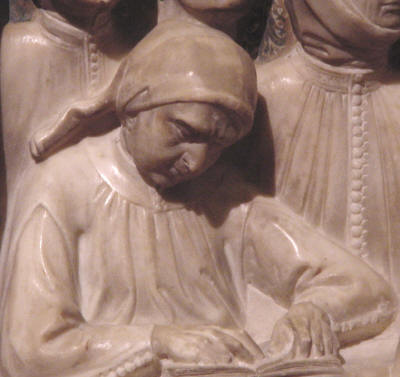|

Detail of Tomb of Johannes
Legnano, Bologna
On the origins of the maxim "ne crimina remaneant impunita" see
K. Pennington,
"Innocent III and the Ius commune," Grundlagen des Rechts: Festschrift
für Peter Landau zum 65. Geburtstag, herausgegeben von Richard Helmholz,
Paul Mikat, Jörg Müller, Michael Stolleis (Rechts- und
Staatswissenschaftliche Veröffentlichungen der Görres-Gesellschaft, NF 91;
Paderborn: Verlag Ferdinand Schöningh, 2000) 352-354 |
A
signpost for the development of the
inquisitorial procedure is the birth of an important maxim of criminal law,
publicae utilitatis intersit ne crimina
remaneant impunita (It is in the
interest of the public good that crimes do not remain unpunished) during the
pontificate of Pope Innocent III (1198-1216).
Ne crimina
remaneant impunita became a
standard maxim of the Ius commune in the later Middle Ages. It was used by
the jurists to signal the duty that princes and judges had to prosecute
crime. Like many of the rules of law that became part of medieval
jurisprudence, elements of the maxim had its origins in Roman law, but its
final form was shaped by the medieval jurists of the Ius commune.
Publica et communis utilitas |
